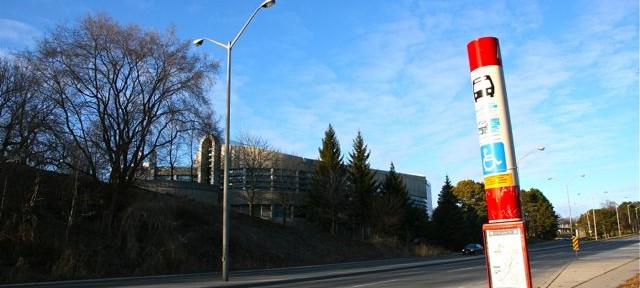Even if Variety Village’s isolated design was painfully ironic, it can make an otherwise complex transit service and funding conundrum accessible to all

By STEPHEN WICKENS
On the surface, Variety Village’s nearly 30-year push for a somewhat convenient bus stop was a no-brainer, but this is one case where blaming the Toronto Transit Commission is flat out unfair.
Sure, I had fun with tabloid journalism during a stint at the Toronto Sun in the 1990s, so I can understand the World War III-sized headlines and the crusading rhetoric the paper used last year to label TTC “drones” as “heartless” and the commission’s initial decision to merely study a route modification as “a kick in the teeth” for the disabled.
But there’s much more to the story and understanding the genesis of this battle matters to everyone in Greater Toronto. This is one of those rare examples that make a complex public policy problem reasonably comprehensible.
The Variety Village mess is rooted in the 1940s, when the province donated to the cause some land left over from construction of an interchange for Highways 2 and 5, better known these days as Kingston Rd. and Danforth Ave. Premier George Drew undoubtedly had good intentions, but when his people determined the original facility would be built on a steep slope between two four-lane highways, he may as well have been telling disabled kids to go play in traffic.
Although we didn’t start buying low-floor buses until the 1990s, there was a chance to address the accessibility disconnect in the late ’70s, when Variety Village shifted away from its role as a vocational training centre. The new focus on the physical, recreational and mobility needs of the disabled required a rebuilding program, which, with a little thought, could have created a connection with the surroundings.
Instead, when Premier Bill Davis opened the new facilities, media were told about wonders such as “adjustable disembarking ramps” for wheelchair vans. Nothing was said about those who would get there by TTC. “The building was designed so a person with any kind of disability can move and function without help or embarrassment,” officials boasted.
That’s likely still the case — once you’re safely on the island.
The new structures may be Toronto’s finest example of architectural irony. The “model of accessibility,” a place dedicated to helping the disabled fit seamlessly into our community, looks and functions more like a fortress on a hill. A walk from the long-standing Kingston Road bus stop to the entrance is a good four-minute climb over tough terrain — for a fully mobile adult, in good weather.
Variety Village may not have been able to hire the best architects, but shouldn’t those who okayed the plans have given primary consideration to an entrance close to and level with the Kingston Road bus, the only TTC route serving the property?
With hindsight, it’s obvious the new building should have gone atop or next to a subway stop, even if it cost more initially. It’s painful to think that Kennedy station, still surrounded by underused lands 30 years on, was built the same time as Variety Village.
It’s more painful to consider this is far from an isolated case and there’s no end of stupidity in sight. Post-secondary students often can’t afford cars, but since World War II we’ve marooned most new campuses where quality cost-effective transit is impossible. We put York University on farmland north of the city, then spent 50-plus years discussing an incredibly expensive subway extension to fix the mistake. We did it again recently with the University of Ontario Institute of Technology, which could have helped revitalize Oshawa’s downtown or gone atop the GO station and its acres of parking. Instead, UOIT is in the city’s car-dependent north.
A wave of boomers is about to retire and many will end up unable to drive, but living in places designed for cars. Our kids are victims of unnecessary inaccessibility, forcing us to spend fortunes in time and money ferrying them to school and other activities.
Variety Village is a world-renowned contributor to our community – an institution whose fund-raising has been killed in recent years by lotteries and casinos. Even if it has contributed to some of its own problems, it deserves good transit access and our support. It’s nice to see that the TTC has applied a Band-Aid — though transit-dependent residents of the Glen Everest neighbourhood probably disagree.
But the larger lesson for all of us is, greenbelt or not, if governments allow or inadvertently promote office parks, big-box malls, colleges, subdivisions and condo towers where cars are essential, we guarantee taxpayers will get far less bang for the billions of bucks that may or may not eventually flow through the TTC and Metrolinx.
